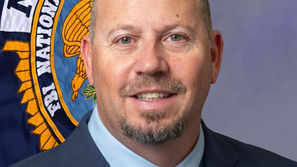Torrent? More like wet noodles
- Chuck Doud
- Feb 26, 2017
- 3 min read
We are only getting about half the story of this winter’s rainfall. Yes, it has been heavier than normal, but it is far from the historic proportions that some media have been reporting.
In fact, the real story may be that because of the dams and other water-handling infrastructure we have, damage from flooding has been minimized, and plenty of water has been put away for future use.
Some politicians and some climatologists say that this series of storms has been the product of global warming, or perhaps global cooling, depending on what their theory of the day happens to be, but the facts belie that. While slight global warming has been recorded over the past few decades, the really big floods have occurred when global temperatures were largely cooler.
California has been through far worse in terms of damage from floods than we have experienced in the present season.
Here is a list put together by Bob Golden writing in Families Protecting the Valley Newsletter.
“The next time someone tells you this is a historic year for California, remember this,” he writes:
The Los Angeles Flood of 1825 — So powerful it changed the course of the Los Angeles Michelle River.
January 1850 — A major flood devastated the new city of Sacramento.
December 1861-January 1862 — The Great Flood of California lasted 45 days, and was the largest flood recorded in the state. The entire Sacramento and San Joaquin valleys were inundated for an extent of 300 miles. That was us, folks; the entire valley was under water.
The Christmas flood of December 1964 — The six days from Dec. 19-24 were the wettest ever recorded at many stations on the North Coast. Every major stream in the North Coast produced new high values of extreme peak flows.
The California flood of January and March 1995 — More than 100 stations recorded their greatest one-day rainfalls in those stations’ histories.
Many other floods are part of this list, all of which were more powerful than the present weather is leaving behind.
Is there any correlation in these floods with records on global warming or global cooling? Not that can be pinpointed.
What is worth keeping in mind, though, is that the effects of this year’s flooding have been mitigated by the dams, and levees and canals that have been built over the years ago by farsighted people who knew the importance of controlling floods and reserving rainwater for future use.
If ever there was an argument for building the Temperance Flat Dam, this rain season has been it. If ever there was an argument for improving the Oroville Dam, this rain season has been it. If ever there has been an argument for rebuilding levee systems that need rebuilding, this rain season has been it.
What this season is telling us is that this is the time to build. This is the time to repair.
Yes, there may be a few more wet years, but they will be followed by dry years, and this is now the time to start getting ready for both.
Just so you know, there’s nothing particularly new about President Trump’s policy of restricting some reporters from certain media from his press conferences.
When press conferences were held in the Oval Office, for example, relatively few reporters and no photographers were allowed. Some presidents, such as Woodrow Wilson, refused to be quoted on the record, and violating that edict could get a reporter thrown out permanently. Wilson held the first formal press conference in 1913, and his rules were the rules that prevailed until President Dwight Eisenhower loosened them to allow television cameras into the conferences.
Reporters, even those from giant newspapers and networks, may be excluded from press conferences by a president for no reason at all.
The reporters complain about this immediately when they find themselves among the excluded. They claim that the exclusions keep “the people” from having access to their government.
But that isn’t necessarily true. The reporters are primarily upset because being excluded is not good for their careers, particularly the TV people, who get bonuses for on-air appearances.


























Comments